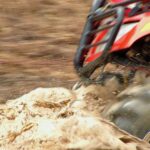Heavy trucks in construction must function in the harshest environments. This machinery depends on mobility and movement, two factors that require bearings. The more prominent bearings found in the heavy-truck industry include bushings and spherical plain bearings.
Bushings are mounted in a number of locations in construction equipment including the suspension system, axles, steering joints, linkages, pivots and hydraulic cylinders. They absorb impact, take loads, reduce noise and control the amount of movement in joints.
Materials for these applications consist of steel and bronze. Steel tends to be more cost-effective and have the ability to take higher loads than bronze. However, it needs regular lubrication. Since construction machines can run 24-hours at a time, it can mean regreasing at the end of every shift or every eight hours. If an employee forgets to regrease the bushing, it can lead to premature failure, and potentially shut down the entire machine.
Bronze is softer than steel so its load rating isn’t as high as steel bushing. Aluminum bronze bushings are still widely used in construction machines. For example, a dozer has bronze bushings around the shaft. The reason is two-fold. First, the bushing is designed to wear so that it requires replacement and not the more expensive shaft. Secondly, it has a longer lubrication interval between regreasing needs. Depending on the application, it can be double or triple that of steel.
When selecting a bearing, it is important to work with your bearing manufacturer’s engineering team as they can spot bearing-related improvements. For example, CCTY identified a critical design change when reviewing a bushing selection for a bulldozer’s shaft.
The bottom line is that bushings play a key role in construction applications. Choosing the right one will improve the life of the equipment.

